About Thimphu City
 Thimphu is located in the western part of Bhutan at an altitude of around 2,300 meters. It is the capital of the country and is located in the fertile valley of the Thimphu river. Though small with a population of about 100,000 people, Thimphu is a cosmopolitan city with an active resident expatriate population from countries such as India, Japan, Austria, Switzerland, the Netherlands, Denmark, New Zealand, Bangladesh, and South Korea. Thimphu is a cauldron of the new and the old with ancient monuments, fortresses, and temples juxtaposed with modern infrastructure.
Thimphu is located in the western part of Bhutan at an altitude of around 2,300 meters. It is the capital of the country and is located in the fertile valley of the Thimphu river. Though small with a population of about 100,000 people, Thimphu is a cosmopolitan city with an active resident expatriate population from countries such as India, Japan, Austria, Switzerland, the Netherlands, Denmark, New Zealand, Bangladesh, and South Korea. Thimphu is a cauldron of the new and the old with ancient monuments, fortresses, and temples juxtaposed with modern infrastructure.
Summers are pleasant and warm, while winters are cold but sunny and clear. Thimphu city has a well established infrastructure which includes a modern telecommunications network, good road links, modern and traditional indigenous hospitals, a reliable power supply, and a peaceful and stable community.
Memorial Chorten

Kuenselphodrang/Buddha Dordenma Statue
 This massive statue of Shakyamuni measures in at a height of 51.5 meters, making it one of the largest statues of Buddha in the world. The statue is made of bronze and is gilded in gold. 125,000 smaller Buddha statues have been placed within the Buddha Dordenma statue (100,000 8-inch tall, and 25,000 12-inch tall statues). The throne that the Buddha Dordenma sits upon is a large meditation hall.
This massive statue of Shakyamuni measures in at a height of 51.5 meters, making it one of the largest statues of Buddha in the world. The statue is made of bronze and is gilded in gold. 125,000 smaller Buddha statues have been placed within the Buddha Dordenma statue (100,000 8-inch tall, and 25,000 12-inch tall statues). The throne that the Buddha Dordenma sits upon is a large meditation hall. 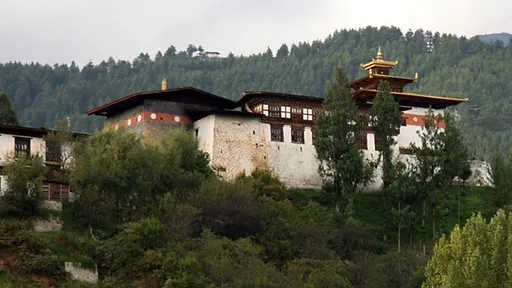
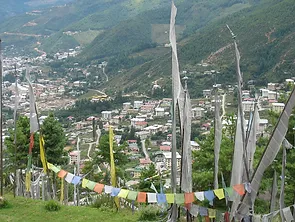 Sangaygang hill (elevation 2685 m) is a scenic spot with hundreds of prayer flags and panoramic views from above Thimphu valley. This also the location for the large transmission tower belonging to the Bhutan Broadcasting Service (BBS). Several hiking trails start from this location. The area is also popular with couple for dates at night.
Sangaygang hill (elevation 2685 m) is a scenic spot with hundreds of prayer flags and panoramic views from above Thimphu valley. This also the location for the large transmission tower belonging to the Bhutan Broadcasting Service (BBS). Several hiking trails start from this location. The area is also popular with couple for dates at night.Motithang Takin Preserve
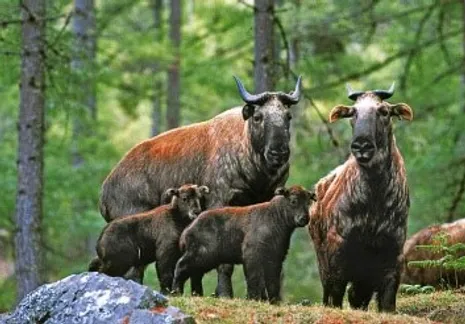 This wildlife preserve houses several ‘takin’, Bhutan’s national animal, as well as a few other animals. The takin is said to have been created by the ‘divine madman’, a 15th century lama, Drukpa Kuenley, by fixing the head of goat onto the body of a cow. Initially a zoo, the 4th King did not see the idea of keeping animals in captivity to be appropriate for Buddhist kingdom; the animals were released by did not stray far from the area, with some even roaming the streets of Thimphu. For practical purposes, the animals were given a large preserve area to roam around in instead. The preserve is located along the road to the Sangaygang/BBS tower area.
This wildlife preserve houses several ‘takin’, Bhutan’s national animal, as well as a few other animals. The takin is said to have been created by the ‘divine madman’, a 15th century lama, Drukpa Kuenley, by fixing the head of goat onto the body of a cow. Initially a zoo, the 4th King did not see the idea of keeping animals in captivity to be appropriate for Buddhist kingdom; the animals were released by did not stray far from the area, with some even roaming the streets of Thimphu. For practical purposes, the animals were given a large preserve area to roam around in instead. The preserve is located along the road to the Sangaygang/BBS tower area.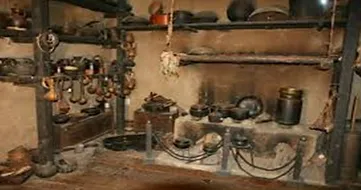 This museum was established in 2001 and provides visitors and tourists with fascinating insights into the Bhutanese material culture and way of life. The Folk Heritage Museum is set inside a three storied, 19th century traditional house. The museum gives you a glimpse of the traditional Bhutanese lifestyle, in addition to artifacts from rural households; it also displays an impressive collection of typical household objects, tools and equipment. A restaurant at the location serves authentic Bhutanese food.
This museum was established in 2001 and provides visitors and tourists with fascinating insights into the Bhutanese material culture and way of life. The Folk Heritage Museum is set inside a three storied, 19th century traditional house. The museum gives you a glimpse of the traditional Bhutanese lifestyle, in addition to artifacts from rural households; it also displays an impressive collection of typical household objects, tools and equipment. A restaurant at the location serves authentic Bhutanese food.
Choki Traditional Art School
 This museum was established in 2001 and provides visitors and tourists with fascinating insights into the Bhutanese material culture and way of life. The Folk Heritage Museum is set inside a three storied, 19th century traditional house. The museum gives you a glimpse of the traditional Bhutanese lifestyle, in addition to artifacts from rural households; it also displays an impressive collection of typical household objects, tools and equipment. A restaurant at the location serves authentic Bhutanese food.
This museum was established in 2001 and provides visitors and tourists with fascinating insights into the Bhutanese material culture and way of life. The Folk Heritage Museum is set inside a three storied, 19th century traditional house. The museum gives you a glimpse of the traditional Bhutanese lifestyle, in addition to artifacts from rural households; it also displays an impressive collection of typical household objects, tools and equipment. A restaurant at the location serves authentic Bhutanese food.
Tango Monastery
 This museum was established in 2001 and provides visitors and tourists with fascinating insights into the Bhutanese material culture and way of life. The Folk Heritage Museum is set inside a three storied, 19th century traditional house. The museum gives you a glimpse of the traditional Bhutanese lifestyle, in addition to artifacts from rural households; it also displays an impressive collection of typical household objects, tools and equipment. A restaurant at the location serves authentic Bhutanese food.
This museum was established in 2001 and provides visitors and tourists with fascinating insights into the Bhutanese material culture and way of life. The Folk Heritage Museum is set inside a three storied, 19th century traditional house. The museum gives you a glimpse of the traditional Bhutanese lifestyle, in addition to artifacts from rural households; it also displays an impressive collection of typical household objects, tools and equipment. A restaurant at the location serves authentic Bhutanese food.
APIC Handicrafts Market
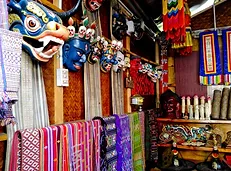 Bhutan’s first ever Craft Bazaar is a spectacle of traditional bamboo huts, aligned neatly below Norzin Lam, which showcases a wide range of authentic Bhutan-made art and craft products at a reasonable price range. With the products sourced mostly from rural areas, the bazaar aims to promote Bhutan’s craft industry by creating a viable market, which in turn acts to preserve and promote Bhutan’s unique culture. The initiative is also expected to support equitable socio-economic development in the country.
Bhutan’s first ever Craft Bazaar is a spectacle of traditional bamboo huts, aligned neatly below Norzin Lam, which showcases a wide range of authentic Bhutan-made art and craft products at a reasonable price range. With the products sourced mostly from rural areas, the bazaar aims to promote Bhutan’s craft industry by creating a viable market, which in turn acts to preserve and promote Bhutan’s unique culture. The initiative is also expected to support equitable socio-economic development in the country.
Jungshi Paper Factory
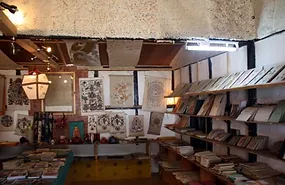
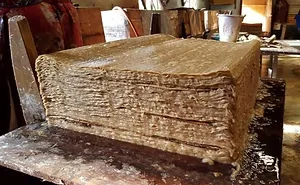 The Jungshi handmade paper factory uses traditional methods to produce the authentic Bhutanese paper known as Deh-sho. It is located approximately 1 km from Thimphu City. The factory uses the bark of two tree species, the Daphne tree and Dhekap tree in the manufacture of traditional paper. Deh-sho paper was originally used by monasteries for woodblock and manuscript books and also for writing prayer books. The Jungshi paper factory continues to preserve and promote this age-old Bhutanese tradition. It also produces various other products, such as stationery and greeting cards.
The Jungshi handmade paper factory uses traditional methods to produce the authentic Bhutanese paper known as Deh-sho. It is located approximately 1 km from Thimphu City. The factory uses the bark of two tree species, the Daphne tree and Dhekap tree in the manufacture of traditional paper. Deh-sho paper was originally used by monasteries for woodblock and manuscript books and also for writing prayer books. The Jungshi paper factory continues to preserve and promote this age-old Bhutanese tradition. It also produces various other products, such as stationery and greeting cards.
